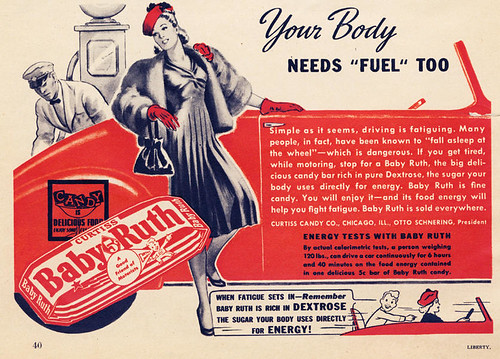
Check out @themediaisdying on Twitter for a glimpse at the convulsions of an industry that’s either at death’s door or, for the more optimistically inclined, in the midst of a violent but necessary transformation.
I’ve worked in magazine publishing for 15 years now — consumer, B2B and non-profit — and as has been noted pretty much everywhere recently, 2008 was an ugly year. Mass consumer and B2B brands are getting hit the hardest, but even local and niche brands with strong subscriber bases are getting hammered by this perfect storm, and surprisingly to almost no one with any sense some people, the Internet has turned out to not be the magic bullet it was proclaimed to be.
(In fact, in many cases, online publishing is effectively “trading dollars for pennies“, and the economic fallout that’s affected print advertising is undoubtedly going to affect online advertising, too. ETA: It already has.)
Flip through the most recent issues of your favorite magazines and you’ll probably notice they’re a little bit lighter than they used to be. Less editorial content; thinner paper; deeply discounted, sometimes desperately worded subscription offers.
Almost all of them likely have less ads (and in many cases less relevant ads) than they used to, too.
I was cautiously optimistic that the major damage might be limited to 2008, and 2009 could be a rebuilding year for most brands on flat revenues, with some going under and a few even pulling off a Miami Dolphins-style turnaround, but 13 days into the new year, it looks like things still haven’t quite hit bottom.
Reporting on the steep decline in ad revenue in 2008, Folio noted:
Many publishers would like to forget 2008 ever happened.
Consumer magazine advertising pages dropped 11.7 percent in 2008 when compared to 2007, according to year-end figures released by the Publishers Information Bureau late Tuesday.
The drop in advertising accelerated in the fourth quarter, as pages slid more than 17 percent.
“Like other ad-supported media, magazines have been affected by the economic slump, which deepened as 2008 progressed,” Ellen Oppenheim, the Magazine Publishers of America’s executive vice president said in statement. “Advertiser decisions for the fourth quarter were influenced by a range of factors. For longer-lead time monthlies, consumers cut spending during the summer due to soaring energy prices, which caused advertisers to put buy fewer ads in year-end magazine issues. In the fall and early winter, rising unemployment and steep stock market declines led to restrained ad spending in weekly titles.”
The drop followed three years of flatness, and was by far the worst slide since before 1999, the earliest year comparative PIB numbers are available.
Ironically, this is a problem the industry brought upon itself as clueless investment firms bought up publishing companies, made ill-conceived acquisitions, stripped them to the bone to wring as much profit out of them as possible before selling out to the next sucker. Meanwhile, way too many publishers, agencies and advertisers happily went through their annual expense-account-catered dance of discounts and value-adds, bowing to the “more for less” demands of their larger advertisers while ignoring the needs of smaller advertisers who quickly embraced the Internet and now mistakenly believe that a Google Adwords campaign is a legitimate marketing plan.
For many, the reader was little more than a number, a guaranteed rate base for advertisers to be met by any means necessary. (Started receiving any random subscriptions lately? Wired, New York, Gourmet and, most ridiculously, W, all recently started showing up, uninvited, in my mailbox.)
Advertisers of all sizes have also become “publishers” themselves, producing competitive content online that rivals the websites of the magazines they used to depend on to reach their targeted audience, in some cases offering a better user experience.
The one thing publishers still have that most advertisers don’t, though, is the strength of their brands and the credibility — assuming they have any — of their editorial content. Strong magazine brands offer a platform to build brand awareness that no Google keyword can match. In fact, several studies have shown that display ads in magazines actually boost search engine traffic:
According to 12 months of proprietary Specific Media Ad Effectiveness data, by comScore, display advertising significantly lifts Online search activity. The study demonstrates that consumers exposed to display advertising were more likely to search for brand terms (i.e. automotive manufacturer), and segment terms (i.e. vehicle class), than unexposed consumers.
Chris Vanderhook, COO, Specific Media, said “… unique post-campaign reporting tools show how display campaigns impact search, site visitation and engagement…”
The study shows that display advertising has a direct impact on both paid and organic searches and clicks.
Debbie Stier, SVP, Associate Publisher of Harper Studio posed an interesting question yesterday:
Is Advertising Dead? Or is There a Huge Opportunity for Interesting, Innovative, and Entertaining Ads to Emerge?
…it seems to me that advertising as it exists now may be dead, because it doesn’t work, but there is room, and in fact an opportunity, for advertising to become remarkable — to entertain or inform — or as Seth Godin would say, to be a Purple Cow.
I agree. Advertising isn’t dead; BAD, TRITE advertising is dead and magazines that depend on such ads are going to die with them. And in some cases, deservedly so.
The challenge for magazine publishers today is three-fold: transform their business model to one that de-emphasizes ad revenue; develop new advertising models that offer value to both their advertisers and their readers; and, perhaps the most difficult of all, challenge their advertisers to be better partners.
Of course, the trick to that last point is that it’s a two-way street and there are other magazines out there that will continue to do things the old way and find short-term success in doing so. Holding the line on the high ground will be difficult, but necessary, and in the long run, it will prove to be the more profitable choice.
And it is most definitely a choice.
Do you like email?
Sign up here to get my bi-weekly "newsletter" and/or receive every new blog post delivered right to your inbox. (Burner emails are fine. I get it!)



awesome!